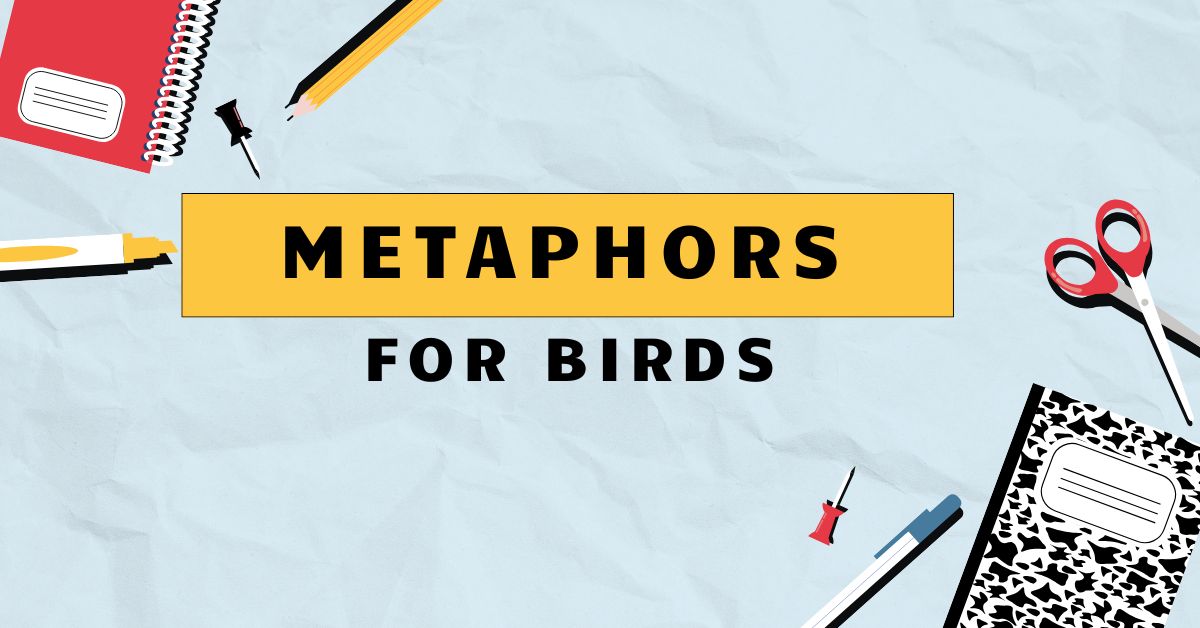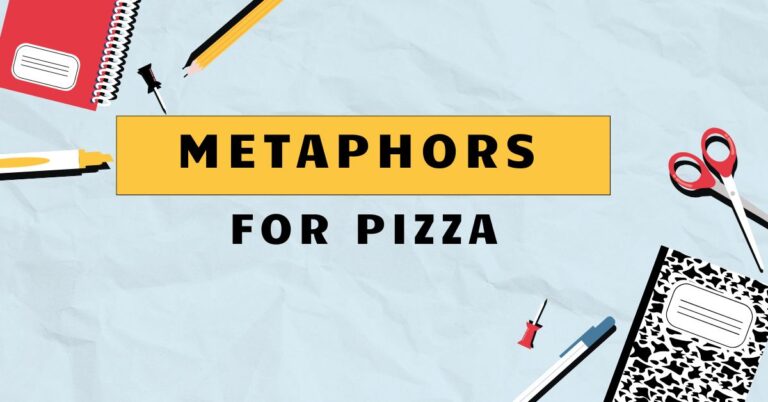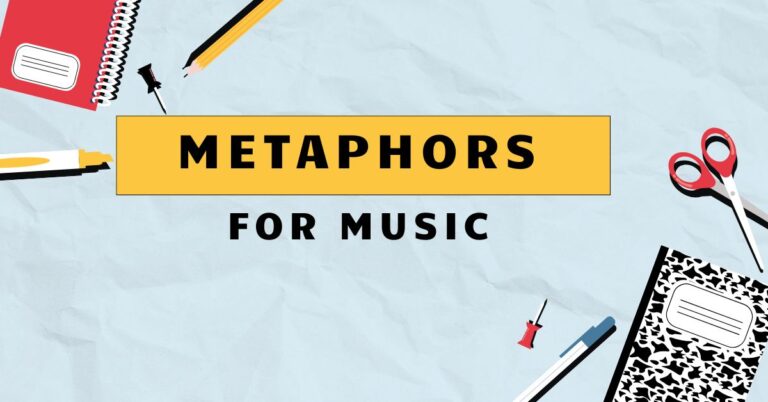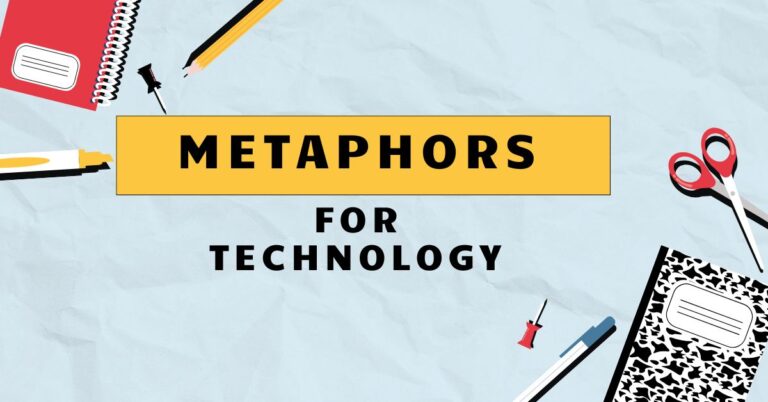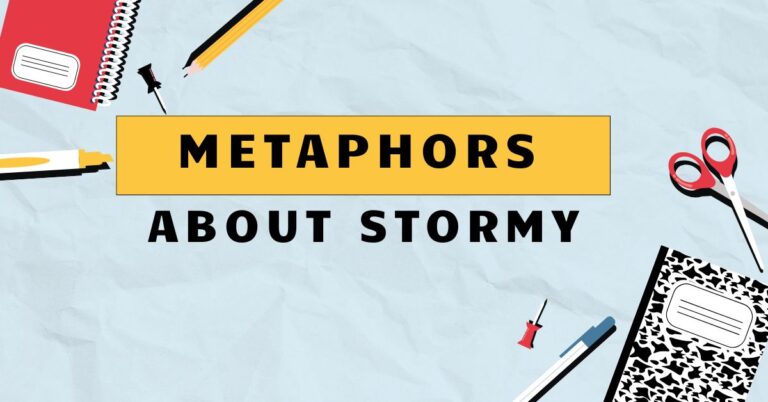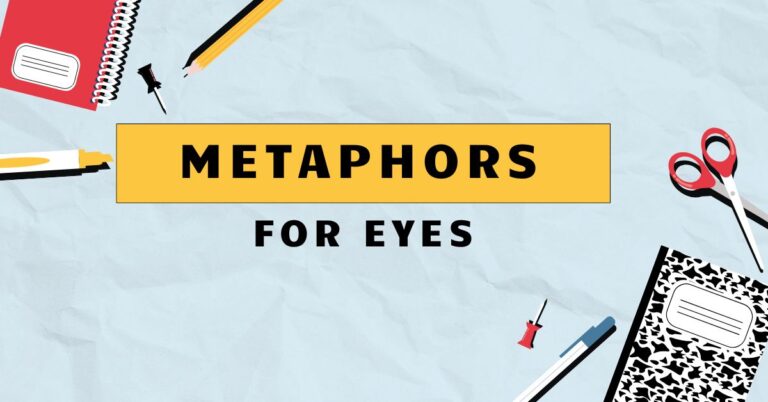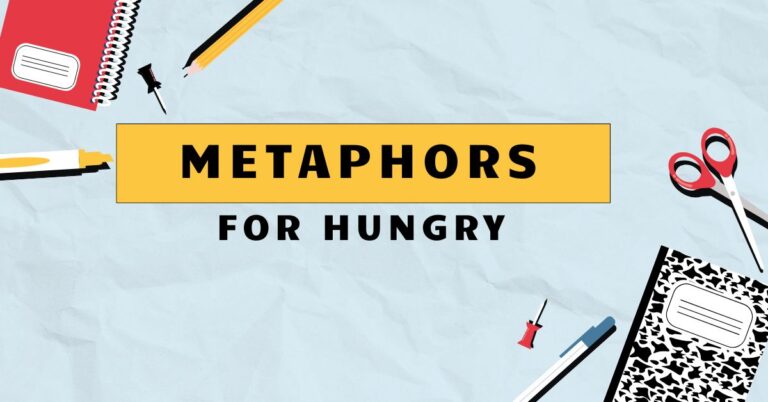41 Feathered Words: Mastering Bird Metaphors in English Grammar
Metaphors are powerful tools that enrich our language, allowing us to convey complex ideas in vivid and relatable ways. Bird metaphors, in particular, offer a rich source of imagery, drawing upon the diverse characteristics and behaviors of birds to add depth and color to our communication.
Understanding how these metaphors function is crucial for anyone seeking to improve their English comprehension and expression. This article provides a comprehensive guide to bird metaphors, exploring their meanings, usage, and grammatical implications.
Whether you’re an English language learner, a student of literature, or simply someone who enjoys exploring the nuances of language, this guide will equip you with the knowledge and skills to effectively interpret and utilize bird metaphors.
This article will benefit English language learners, literature students, creative writers, and anyone interested in enriching their vocabulary and understanding of figurative language. By mastering bird metaphors, you can enhance your reading comprehension, improve your writing skills, and gain a deeper appreciation for the beauty and complexity of the English language.
Table of Contents
- Introduction
- Definition of Bird Metaphors
- Classification of Metaphors
- Function of Bird Metaphors
- Contexts for Using Bird Metaphors
- Structural Breakdown of Bird Metaphors
- Tenor and Vehicle
- Implied Meaning and Connotation
- Grammatical Roles of Bird Metaphors
- Types and Categories of Bird Metaphors
- Behavioral Metaphors
- Physical Characteristic Metaphors
- Symbolic Metaphors
- Examples of Bird Metaphors
- Behavioral Metaphor Examples
- Physical Characteristic Metaphor Examples
- Symbolic Metaphor Examples
- Mixed Metaphor Examples
- Idiomatic Bird Metaphor Examples
- Usage Rules for Bird Metaphors
- Appropriateness and Context
- Consistency and Clarity
- Avoiding Clichés
- Common Mistakes with Bird Metaphors
- Misinterpretation of Metaphorical Meaning
- Overuse of Bird Metaphors
- Inconsistent Mixing of Metaphors
- Practice Exercises
- Exercise 1: Identifying Bird Metaphors
- Exercise 2: Interpreting Bird Metaphors
- Exercise 3: Using Bird Metaphors in Sentences
- Advanced Topics in Bird Metaphors
- Extended Bird Metaphors
- Bird Metaphors in Allegory
- Cultural Variations in Bird Metaphors
- Frequently Asked Questions (FAQ)
- Conclusion
Definition of Bird Metaphors
A metaphor is a figure of speech that directly compares two unrelated things, stating that one *is* the other, or implying a similarity between them, to highlight certain shared characteristics. Bird metaphors specifically use the characteristics, behaviors, or symbolism associated with birds to describe or represent something else.
These metaphors can add vividness, depth, and emotional resonance to language.
Classification of Metaphors
Metaphors can be classified into several types, including:
- Standard Metaphors: Explicitly compare two things (e.g., “He is an eagle in business”).
- Implied Metaphors: Imply a comparison without directly stating it (e.g., “She soared through the competition,” implying she is like a bird).
- Dead Metaphors: Metaphors that have become so common that they are no longer recognized as figurative (e.g., “the eye of the storm”).
- Mixed Metaphors: Combine two or more inconsistent metaphors (often unintentionally humorous).
Function of Bird Metaphors
Bird metaphors serve several functions in language:
- Enhance Description: They provide a more vivid and engaging way to describe something.
- Convey Emotion: They can evoke specific emotions or feelings.
- Simplify Complex Ideas: They can make abstract concepts more understandable by relating them to something concrete.
- Add Nuance: They can add layers of meaning and interpretation.
Contexts for Using Bird Metaphors
Bird metaphors can be used in a variety of contexts, including:
- Literature: To create imagery and symbolism.
- Poetry: To express emotions and ideas in a creative and evocative way.
- Everyday Speech: To add color and expressiveness to communication.
- Business Writing: To make presentations and reports more engaging (used sparingly and appropriately).
Structural Breakdown of Bird Metaphors
Understanding the structure of a metaphor helps in interpreting its meaning and using it effectively. Key components include the tenor, vehicle, and implied meaning.
Tenor and Vehicle
In a metaphor, the tenor is the subject being described, and the vehicle is the bird (or bird-related concept) that is used to describe it. For example, in the metaphor “He is an eagle in business,” “He” is the tenor, and “eagle” is the vehicle.
Implied Meaning and Connotation
The implied meaning is the shared characteristic or quality between the tenor and the vehicle that the metaphor highlights. The connotation refers to the emotional associations connected to the bird used.
For instance, an eagle often connotes strength, vision, and leadership, so calling someone an “eagle in business” suggests they possess these qualities.
Grammatical Roles of Bird Metaphors
Bird metaphors can function as different parts of speech within a sentence:
- Nouns: “He is a *nightingale* of a singer.”
- Adjectives: “She had a *bird-like* grace.”
- Verbs: “The economy *soared* after the new policy.”
- Adverbs: “He watched her *hawk-like*.”
Types and Categories of Bird Metaphors
Bird metaphors can be categorized based on the specific aspects of birds they draw upon.
Behavioral Metaphors
These metaphors use the characteristic behaviors of birds to describe human actions or situations. Examples include:
- “He’s always *flitting* from one project to another.” (referring to a bird’s quick, restless movements)
- “They *nestled* together for warmth.” (referring to birds building nests and seeking shelter)
- “She *pecked* at the keyboard all day.” (referring to a bird’s pecking motion)
Physical Characteristic Metaphors
These metaphors use the physical attributes of birds to describe physical qualities or appearances. Examples include:
- “She had a *swan-like* neck.” (referring to a swan’s long, elegant neck)
- “He was as *light as a feather*.” (referring to a feather’s weightlessness)
- “Her eyes were *beady* and sharp.” (referring to a bird’s small, piercing eyes)
Symbolic Metaphors
These metaphors use the symbolic meanings associated with certain birds to represent abstract concepts or qualities. Examples include:
- “He was a *dove* of peace.” (referring to the dove’s symbolism of peace)
- “She was a *phoenix* rising from the ashes.” (referring to the phoenix’s symbolism of rebirth)
- “He was a *raven* bringing bad news.” (referring to the raven’s association with ill omens)
Examples of Bird Metaphors
Here are several examples of bird metaphors, categorized by type, to illustrate their diverse applications.
Behavioral Metaphor Examples
The following table illustrates behavioral bird metaphors, showing the comparison between the bird’s behavior and the human characteristic or action.
| Metaphor | Tenor (Subject) | Vehicle (Bird Behavior) | Implied Meaning |
|---|---|---|---|
| He flitted from job to job. | His career | Flitting (quick, restless movement) | Lack of stability or focus |
| They nested in their new home. | Their settling in | Nesting (building a home) | Comfort and security |
| She pecked at the problem until she solved it. | Her approach to the problem | Pecking (persistent, repetitive action) | Persistence and determination |
| The children flocked to the playground. | The children’s movement | Flocking (gathering in large numbers) | Gathering together enthusiastically |
| He preened in front of the mirror. | His self-admiration | Preening (grooming feathers) | Vanity and attention to appearance |
| She brooded over the mistake. | Her contemplation | Brooding (sitting on eggs) | Deep, anxious thought |
| The team swooped in and won the game. | The team’s action | Swooping (diving quickly) | Sudden, decisive action |
| He mimicked her every word. | His imitation | Mimicking (copying sounds) | Exact replication |
| They migrated south for the winter. | Their travel | Migrating (seasonal travel) | Moving to a warmer climate |
| The politician parroted the party line. | The politician’s speech | Parroting (repeating without understanding) | Repetitive, unoriginal speech |
| The company hatched a new plan. | The company’s planning | Hatching (bringing forth from an egg) | Developing a new idea |
| He stalked her like a hawk. | His pursuit | Stalking (hunting prey) | Persistent following |
| The idea took wing and spread rapidly. | The idea’s spread | Taking wing (beginning to fly) | Rapid dissemination |
| She chirped happily about her day. | Her conversation | Chirping (making cheerful sounds) | Joyful expression |
| The rumor flew around the office. | The rumor’s spread | Flying (moving through the air) | Rapid dissemination |
| He perched on the edge of the chair. | His sitting | Perching (sitting on a branch) | Precarious or temporary position |
| The singer warbled a beautiful tune. | The singer’s song | Warbling (singing with trills) | Melodious singing |
| The students caged themselves in the library. | The student’s studying | Caged (confined in a cage) | Self-imposed isolation |
| He flew into a rage. | His outburst | Flying (moving rapidly) | Sudden, intense anger |
| The actor strutted across the stage. | The actor’s walk | Strutting (walking proudly) | Pompous or confident walk |
| She hovered over her children. | Her attention to the children | Hovering (remaining in one place in the air) | Overprotective oversight |
| The politician squawked about the new law. | The politician’s complaint | Squawking (loud, harsh cry) | Loud, harsh complaint |
| The children pecked at their food. | The children’s eating | Pecking (eating small bits) | Eating reluctantly or slowly |
| He swooped down on the opportunity. | His seizing the opportunity | Swooping (diving quickly) | Taking advantage quickly |
| They flapped around in a panic. | Their panicked actions | Flapping (moving wings wildly) | Disorganized, frantic activity |
| The spy eavesdropped on the conversation. | The spy’s listening | Eavesdropping (listening secretly) | Secretly listening |
This table displays how various bird behaviors can be metaphorically applied to human actions and situations, enriching our descriptions and adding layers of meaning.
Physical Characteristic Metaphor Examples
The following table showcases metaphors that use the physical characteristics of birds to describe people or objects.
| Metaphor | Tenor (Subject) | Vehicle (Bird Characteristic) | Implied Meaning |
|---|---|---|---|
| She had a swan-like neck. | Her neck | Swan’s neck (long, graceful) | Elegant and graceful |
| He was as light as a feather. | His weight | Feather (lightweight) | Very lightweight |
| Her eyes were beady and sharp. | Her eyes | Bird’s eyes (small, piercing) | Sharp and observant |
| The building had a towering presence, like an eagle’s aerie. | The building’s presence | Eagle’s aerie (high nest) | Imposing and dominant |
| His voice was as melodious as a lark’s song. | His voice | Lark’s song (melodious) | Pleasant and tuneful |
| She was bird-boned and fragile. | Her build | Bird bones (light, delicate) | Delicate and fragile |
| His gaze was as sharp as a hawk’s eye. | His gaze | Hawk’s eye (keen vision) | Sharp and observant |
| The dress was as colorful as a parrot’s plumage. | The dress | Parrot’s plumage (vibrant colors) | Bright and vibrant |
| His hair was as ruffled as a bird’s feathers in a storm. | His hair | Ruffled feathers (disheveled) | Disheveled and messy |
| She moved with a bird-like quickness. | Her movement | Bird’s movement (agile) | Quick and agile |
| His skin was as smooth as a dove’s feather. | His skin | Dove’s feather (soft, smooth) | Soft and smooth |
| The machine was as silent as an owl in flight. | The machine’s operation | Owl in flight (silent) | Quiet and stealthy |
| His coat was as black as a raven’s wing. | His coat | Raven’s wing (black) | Dark and ominous |
| She had a peacock’s pride. | Her pride | Peacock (proud display) | Excessive pride and vanity |
| The child was as small as a hummingbird. | The child’s size | Hummingbird (tiny) | Very small |
| His eyes were as round as an owl’s. | His eyes | Owl’s eyes (large, round) | Large and wide |
| Her voice was as shrill as a seagull’s cry. | Her voice | Seagull’s cry (shrill) | Loud and piercing |
| His hands were as claw-like as an eagle’s talons. | His hands | Eagle’s talons (sharp, curved) | Sharp and grasping |
| The leaves were as yellow as a canary. | The leaves | Canary (yellow) | Bright yellow |
| Her dress was as white as a swan’s plumage. | Her dress | Swan’s plumage (white) | Pure white |
| His movements were as jerky as a chicken’s. | His movements | Chicken’s movements (jerky) | Uncoordinated and awkward |
| The fabric was as soft as a down feather. | The fabric | Down feather (soft) | Extremely soft |
| The bird had a razor-sharp beak. | The bird | Beak (razor-sharp) | Extremely sharp |
This table demonstrates how the physical attributes associated with birds can be used metaphorically to depict people, objects, or even abstract concepts, adding sensory detail and emotional resonance to descriptions.
Symbolic Metaphor Examples
The following table illustrates how the symbolism associated with various birds can be used metaphorically to represent abstract concepts, emotions, or character traits.
| Metaphor | Tenor (Subject) | Vehicle (Bird Symbolism) | Implied Meaning |
|---|---|---|---|
| He was a dove of peace. | His role in negotiations | Dove (peace) | Promoter of peace |
| She was a phoenix rising from the ashes. | Her recovery | Phoenix (rebirth) | Resilient and reborn |
| He was a raven bringing bad news. | His message | Raven (ill omen) | Harbinger of misfortune |
| They were eagles soaring above the competition. | Their success | Eagle (strength, vision) | Dominant and visionary |
| She was a nightingale, enchanting everyone with her voice. | Her singing ability | Nightingale (beautiful song) | Talented and captivating |
| He was a lone wolf, like an owl in the night. | His solitary nature | Owl (wisdom, solitude) | Independent and wise |
| She was a free bird, unburdened by responsibilities. | Her lifestyle | Free bird (freedom) | Independent and unrestrained |
| He was a sitting duck, vulnerable to attack. | His vulnerability | Sitting duck (easy target) | Exposed and defenseless |
| She was a scapegoat, like a caged bird blamed for everything. | Her role in blame | Caged bird (victim) | Unjustly blamed |
| He was a watchful hawk, always alert to danger. | His vigilance | Hawk (alertness) | Vigilant and observant |
| She was a mother hen, always caring for others. | Her nurturing nature | Mother hen (caregiving) | Nurturing and protective |
| He was an ostrich, burying his head in the sand. | His avoidance of problems | Ostrich (avoidance) | Ignoring problems |
| She was a canary in a coal mine, warning of danger. | Her role in warning | Canary (early warning) | Early indicator of danger |
| He was a goose, acting foolishly. | His foolishness | Goose (foolishness) | Silly and foolish |
| She was a vulture, preying on the weak. | Her predatory behavior | Vulture (predatory) | Exploitative and opportunistic |
| He was a cuckoo, out of place and odd. | His strangeness | Cuckoo (oddity) | Strange and unconventional |
| She was a dodo, becoming extinct in her ways. | Her outdated habits | Dodo (extinction) | Outdated and obsolete |
| He was a penguin in a desert, completely out of his element. | His unsuitability | Penguin (out of place) | Unsuited to the situation |
| She was a pigeon, easily fooled and misled. | Her gullibility | Pigeon (gullibility) | Easily deceived |
| He was a turkey, destined for trouble. | His impending doom | Turkey (destined for slaughter) | Doomed to failure |
This table illustrates the symbolic power of birds, showcasing how their associated meanings can be used to convey complex ideas and emotions in a concise and evocative way.
Mixed Metaphor Examples
Mixed metaphors can create confusion or humor. Avoid these!
- Incorrect: “He’s an eagle, nipping problems in the bud.” (Mixing eagle with gardening imagery)
- Correct: “He’s an eagle, soaring above the competition.”
Idiomatic Bird Metaphor Examples
These are common expressions using bird imagery:
- “A bird in the hand is worth two in the bush.” (Having something certain is better than risking it for something more.)
- “Kill two birds with one stone.” (Accomplish two things with one action.)
- “Birds of a feather flock together.” (People with similar interests associate with each other.)
Usage Rules for Bird Metaphors
Using bird metaphors effectively requires attention to context, consistency, and originality.
Appropriateness and Context
Consider the audience and the setting. A highly formal presentation might not be the best place for a whimsical bird metaphor.
Ensure the metaphor aligns with the tone and purpose of your communication.
Consistency and Clarity
Maintain consistency in your metaphors. Avoid mixing bird metaphors with other unrelated images, as this can create confusion.
Ensure that the meaning of the metaphor is clear and easily understood by your audience.
Avoiding Clichés
Strive for originality. Overused metaphors, such as “free as a bird,” can lose their impact.
Try to find fresh and creative ways to use bird imagery to convey your message.
Common Mistakes with Bird Metaphors
Several common errors can undermine the effectiveness of bird metaphors.
Misinterpretation of Metaphorical Meaning
Ensure that the intended meaning of the metaphor is clear. Consider how your audience might interpret the bird imagery you are using.
Cultural differences can influence the interpretation of bird symbolism, so be mindful of your audience’s background.
Incorrect: “He was a real turkey.” (If the audience is unfamiliar with the idiom, they might not understand it means he was foolish.)
Correct: “He made a series of foolish decisions; he was a real turkey.” (Provides context to clarify the meaning.)
Overuse of Bird Metaphors
Avoid using too many bird metaphors in a single piece of writing or conversation. Overuse can make your language sound contrived and unnatural.
Use metaphors sparingly to maximize their impact.
Incorrect: “The team soared like eagles, flitting from one success to another. They were free birds, unburdened by doubt, and nested comfortably at the top.” (Too many bird metaphors in a short space.)
Correct: “The team soared like eagles, achieving significant success.” (A single, impactful metaphor.)
Inconsistent Mixing of Metaphors
Mixing unrelated metaphors can create confusion and undermine your message. Maintain consistency in your imagery to avoid mixed metaphors.
Incorrect: “He’s an eagle, nipping problems in the bud.” (Mixing eagle with gardening imagery)
Correct: “He’s an eagle, soaring above the competition.”
Practice Exercises
Test your understanding of bird metaphors with these exercises.
Exercise 1: Identifying Bird Metaphors
Identify the bird metaphor in each sentence and explain its meaning.
| Question | Answer |
|---|---|
| 1. She was a nightingale, captivating everyone with her voice. | Nightingale: Refers to her beautiful and enchanting singing voice. |
| 2. He was an ostrich, burying his head in the sand. | Ostrich: Refers to his tendency to avoid problems by ignoring them. |
| 3. The rumor flew around the office in a matter of hours. | Flew: Refers to the rapid spread of the rumor. |
| 4. She was a free bird, unburdened by responsibilities. | Free bird: Refers to her independent and unrestrained lifestyle. |
| 5. He was a lone wolf, like an owl in the night. | Owl: Refers to his solitary and wise nature. |
| 6. The company hatched a new plan to increase profits. | Hatched: Refers to the development and creation of a new plan. |
| 7. He watched her hawk-like, never missing a detail. | Hawk-like: Refers to his sharp and observant gaze. |
| 8. The politician parroted the party line without thinking. | Parroted: Refers to his mindless repetition of the party’s message. |
| 9. They nested in their new home, feeling safe and secure. | Nested: Refers to their settling in and creating a comfortable environment. |
| 10. The children flocked to the ice cream truck. | Flocked: Refers to the children gathering together enthusiastically. |
Exercise 2: Interpreting Bird Metaphors
Explain the meaning of the following bird metaphors in your own words.
| Question | Answer |
|---|---|
| 1. He was a sitting duck. | He was an easy target, vulnerable to attack. |
| 2. She was a mother hen. | She was nurturing, protective, and always caring for others. |
| 3. He was a raven bringing bad news. | He was the bearer of unfortunate or ominous information. |
| 4. They were eagles soaring above the competition. | They were achieving great success and dominating their rivals. |
| 5. She was a canary in a coal mine. | She was an early warning sign of potential danger or problems. |
| 6. He was a goose. | He was acting foolishly or silly. |
| 7. She was a vulture. | She was preying on the weak or exploiting others for her own gain. |
| 8. He was a cuckoo. | He was strange, odd, or out of place. |
| 9. She was a penguin in a desert. | She was completely out of her element or unsuited to the situation. |
| 10. He was a turkey. | He was destined for trouble or failure. |
Exercise 3: Using Bird Metaphors in Sentences
Create sentences using the following bird metaphors.
| Question | Answer |
|---|---|
| 1. Soar like an eagle | The company’s profits soared like an eagle after the introduction of the new product. |
| 2. Free as a bird | After retiring, he felt free as a bird, with no responsibilities weighing him down. |
| 3. Watchful hawk | The security guard was a watchful hawk, always alert to any suspicious activity. |
| 4. Nesting | The young couple spent the weekend nesting in their new apartment, making it feel like home. |
| 5. Mimicked | The parrot mimicked everything the zookeeper said, much to the amusement of the visitors. |
| 6. Feather-light | The ballerina moved with a feather-light grace, barely touching the stage. |
| 7. Hawk-eyed | The detective was hawk-eyed, spotting the smallest clues that others missed. |
| 8. Swan-like | The princess had a swan-like neck, adding to her regal appearance. |
| 9. Dove of peace | The diplomat acted as a dove of peace, mediating between the
d warring nations. |
| 10. Raven-haired | She had long, raven-haired locks that cascaded down her back, making her look mysterious and beautiful. |
Advanced Topics in Bird Metaphors
Explore more complex applications of bird metaphors.
Extended Bird Metaphors
An extended metaphor is a metaphor that is developed over several lines or even throughout an entire work. It allows for a deeper exploration of the comparison between the tenor and the vehicle, creating a richer and more complex meaning.
Example:In Emily Dickinson’s poem “Hope is the thing with feathers,” hope is compared to a bird that perches in the soul, singing a tune without words and never asking for anything in return. This metaphor is extended throughout the poem, with each stanza adding another layer to the comparison.
The “thing with feathers” braves the storms and keeps the speaker warm, and it never asks for anything in return. Dickinson masterfully uses the extended metaphor to explore the abstract concept of hope, making it more tangible and relatable.
Bird Metaphors in Allegory
Allegory is a narrative in which characters and events represent abstract ideas or moral qualities. Bird metaphors can be used in allegories to symbolize different aspects of human nature or societal issues.
Example: In George Orwell’s *Animal Farm*, the birds could be seen as representing the more idealistic but ultimately powerless members of society. Their aspirations for freedom and equality are overshadowed by the pigs’ manipulation and control, thus the birds become a metaphor for the unfulfilled promises of revolution.
Cultural Variations in Bird Metaphors
The symbolism associated with birds can vary significantly across different cultures. Understanding these cultural variations is essential for avoiding misinterpretations and using bird metaphors appropriately.
Examples:
- Owls: In Western cultures, owls are often associated with wisdom and knowledge. However, in some African and Asian cultures, they are seen as symbols of bad luck or death.
- Cranes: In Japanese culture, cranes symbolize longevity and good fortune. Folding paper cranes is a traditional way to wish someone a long and healthy life.
- Eagles: While generally seen as symbols of power and freedom in many cultures, the specific connotations can vary. In the United States, the bald eagle is a national symbol representing strength and independence.
Frequently Asked Questions (FAQ)
Conclusion
Bird metaphors offer a rich and versatile way to enhance your language skills and add depth to your communication. By understanding the different types of bird metaphors, their structural components, and the cultural nuances associated with bird symbolism, you can effectively use these metaphors to enrich your writing and speaking.
Whether you’re crafting a literary masterpiece, delivering a persuasive presentation, or simply engaging in everyday conversation, mastering bird metaphors will empower you to express yourself with greater clarity, creativity, and impact. Embrace the power of feathered words and let your language take flight!

